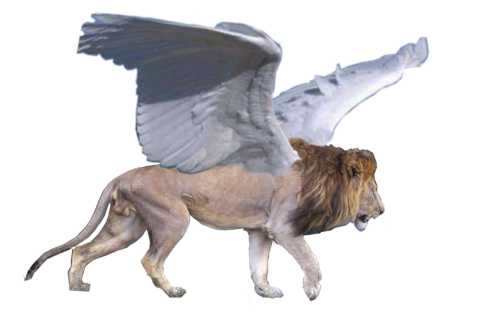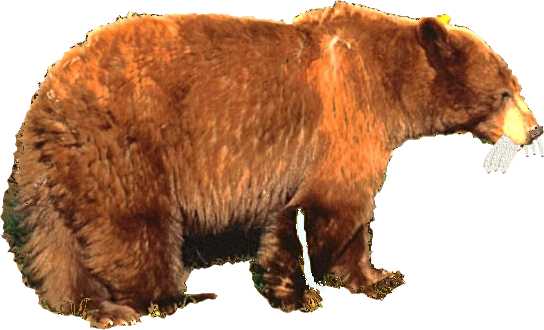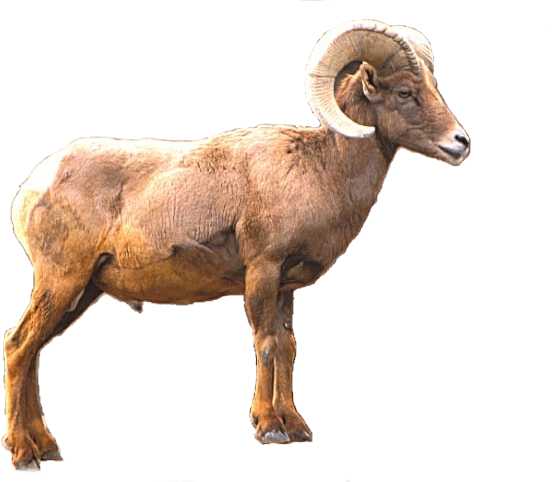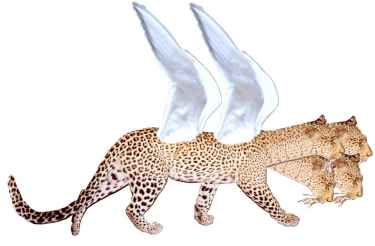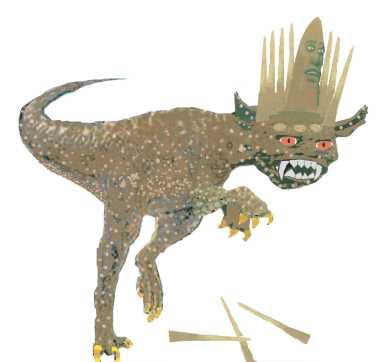View of All Beasts of Daniel 7 and 8
General
Interpretation Principle: Succession of Kingdoms -
from one separate kingdom to another. For more information,
see Prophetic Rules of Interpretation in the Main Menu
Click
on beasts for more information on each beast
Daniel
8 Beasts (Ram and Goat)
Raised
shoulder (or paw) on bear indicates same thing as
a higher horn on ram
Time
Progression: One horn comes up after the other (ram)
Time
Progression: Body to heads (leopard), or one horn
to 4 horns (goat)
Single
horned goat
becomes
4 horned goat
Time
of the leopard body =
single
horn time
of
goat
Time
Progression: Body & Head to horns
Information
About the Graphics Above To Help You Understand
Them
All
4 beasts of Daniel 7 are placed above a time line
to show that time moves forward to the right as the
kingdoms appear in history one by one. Note
that the bear of Daniel 7 is also represented by the
ram (male sheep) of Daniel 8, so both are shown occupying
the same time period. The body of the 4 headed
leopard of Daniel 7 is also represented by the single
horned goat of Daniel 8 and this is shown by the goat
being on the left side of that time period with the
single arrow pointing both to the leopard body and
the single horned goat to indicate they represent
the same time period. The heads of the 4 headed
leopard of Daniel 7 is represented by the 4 horned
goat (the 4 horns actually correspond to the 4 heads)
of Daniel 8. This is shown by having the 4 horned
goat on the right side of that time period and the
single arrow pointing both to the 4 heads of the leopard
and the 4 horns of the goat. Hopefully, this
makes things clear.
Discussion
of Interpretation of the Beasts of Daniel
There
are individuals who have argued that the book of Daniel
was written after all the kingdoms predicted by the
vision of Daniel 7 have appeared on the scene. This,
of course, presumes that there is no God who has the
ability to look forward through time and foresee what
will come. The authors reject that foundation
as false. However, because of this attempt to
post date the writing of the book of Daniel, the authors
of this web page believe that you should have an opportunity
to determine for yourself that the book of Daniel
was written ahead of the events depicted therein. Click
here for a web page that has a discussion of the dating
of the book of Daniel. This web
page just referred to is well documented and might
be worth your time to read it.
Some
argue that Rome did not fall in 476 AD, but most historians
date the fall of Rome from that date. There
are some who argue that Rome never really fell, that
it simply had kings from other groups that took over
the throne. But historically, it lost control
over large areas of territory over time and these
were taken up by the breakup of its empire. So,
it did fall apart. 476 AD seems the best date
for that based on history.
The
rules of interpretation of Daniel and Revelation are
partially explained here, but for a complete list
with an explanation, please see the page of Rules
of Interpretation of Daniel and Revelation. Understanding
the rules of interpretation of Daniel is important
because they will help you properly understand the
beasts of Revelation 12, 13, and 17.
These
beasts show a progression from one kingdom to another. We
call this the Succession
Principle,
which says that when a completely different kingdom
takes over the territory and government of a previous
kingdom, then a kingdom succession has occurred. This
is not to say the previous kingdom is necessarily
completely destroyed, only that it is no longer in
control of a large territory as before and another
has taken over. This does imply that a complete
takeover of most of the territory has occurred, not
a split-up of a kingdom from internal events. There
has been an invasion from an external power. Examples
of the Succession
Princple are
clearly seen above. Babylon
was conquered by Medo-Persia, which in turn was conquered
by the Greeks, which in turn was conquered by the
Romans.
This
is in contrast to the splitting up of a kingdom into
smaller parts such as happened to Rome or Greece. Here
the original kingdoms simply split up into smaller,
weaker kingdoms, but retained much of the characteristics
of the original kingdom. The kingdoms resulting
from the breakup of Greece were essentially Greek,
which resulted in what historians call the Hellenistic
Age, in which Greek culture and practices were propagated
throughout most of these kingdoms. This began
under the empire formed by Alexander the Great, and
when he died, this practice was simply continued. Contrast
that with the takeover of Babylon by Medo-Persia,
in which the invaders were not at all Babylonian in
character, but rather had their own customs and laws. Alexander
the Great certainly had his own customs and laws,
but when his kingdom broke up, the same customs and
laws were essentially retained. Thus, the breakup
kingdoms were like what came before them and resulted
from what came before.
The
splitting up of a kingdom into smaller, weaker kingdoms
is symbolized for Greece by the 4 headed leopard as
happened in Daniel 7, or the single horn on a goat
becoming 4 horns as happened in Daniel 8. We
are currently calling this the Miller
Principle (named
for a man in the 1800s who made much of America aware
of this idea during a religious awakening that occurred
in the 1830s and 1840s). The idea of the Miller
Principle is
that for beasts with multiple heads or horns, the
body represents the time during the initial stage
of a kingdom (if there is only 1 head then it is included
with the time period represented by the body), the
multiple heads (where present) represent the next
stage of that kingdom where it is split into smaller
kingdoms, and finally the multiple horns represent
the final stage of a split up kingdom. In other
words, a kingdom will start out as one whole kingdom which
is not a breakup product of another kingdom (the body
represents this), eventually splits into multiple
parts (the heads represent this), and later still
splits into perhaps more multiple parts (the horns
represent this). Each part represents a separate
and distinct time period from what came before. The
emphasis here is the division of time periods that
correspond to body parts on the symbolic beast's body.
The
fact that a split up kingdom results in smaller, weaker
kingdoms is the basis for the Difference
Principle,
which states that the split up kingdoms will be different
from the original kingdom because they will be smaller
and weaker than the original. Each will have
fewer people and occupy a smaller area than the original
kingdom.
The
split up kingdoms represented by multiple heads and
horns are normally similar to the original kingdom
because they will be political kingdoms also, so this
is the basis of the Similarity
Principle. You
can generalize this observation to say that a political
kingdom will follow a political kingdom and a religious
kingdom will follow a religious kingdom, unless an
exception is stated for that kingdom. An example
of an exception is the stout horn with the eyes and
mouth of Daniel 7 on the 4th beast. It is more
accurately described as a religious power, though
it has political power (all prophetic beasts have
political power to some degree or another), so it
is an exception to the fact that the kingdom it came
out of was political (Rome).
When
exceptions to the previously existing rule occur on
a beast (such as the stout horn on the 4th beast of
Daniel 7, which I like to call the Talking Horn),
we call this the Exception
Principle,
which says that when an exception occurs for the body
of a beast or heads or horns, one follows that exception
until that beast or heads or horns are done in history. In
other words, once the exception is stated, it applies
to the kingdom symbolized by that body part and to
any power that follows it on the same symbol.
The Precedence
Principle come
into play here as well, for it says that previously
demonstrated rules cover future use of the same
symbolism unless there is a statement making
an exception to the rule. This is an inferred
rule based on observation of the beasts in Daniel,
and Revelation also because there are very similar
beasts in Revelation. This also logically
flows from the Author's
Consistency Principle,
which states that God was the designer of the
visions of both Daniel and Revelation and therefore
would have used consistent rules of interpretation
of both books where common symbolism is used
(consider that neither Daniel nor John designed
those visions!). God would have designed
into both visions common rules of interpretation
so that there would not be one set of rules
for Daniel and another for Revelation. To
design in different rules for both books would
have set us up for confusion - we would likely
be unable to determine if we have accurately
interpreted either book.
